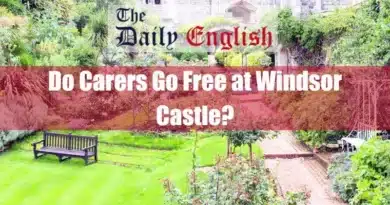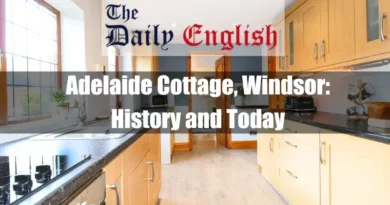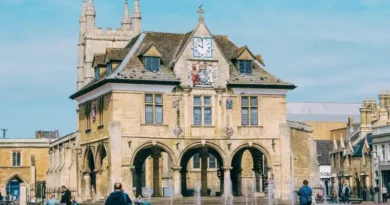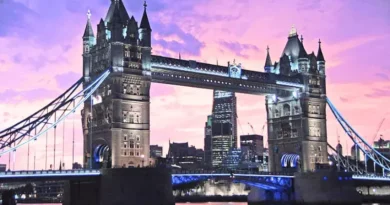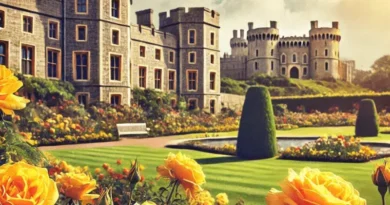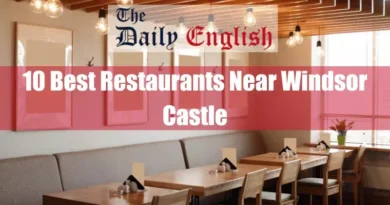Get to Windsor Castle from Canterbury
Key Points
- Windsor Castle is approximately 89.5 miles (144 km) from Canterbury via the M25, 91.7 miles (147.6 km) via the M20 and M25, or 112 miles (180.2 km) via the M2 and M25.
- By car, the fastest and most efficient route is via the M25, covering around 89.5 miles in approximately 1 hour and 42 minutes.
- Alternative driving options include the M20/M25 route (91.7 miles, ~1 hour 55 minutes) and the M2/M25 toll route via Dartford Crossing (112 miles, ~2 hours 2 minutes), though the latter is longer and involves toll charges.
- For train travel, the quickest route (approx. 2 hr 26 min) involves a high-speed Southeastern train from Canterbury West to St Pancras International, a Tube to Paddington, then a fast train to Slough followed by a short shuttle to Windsor & Eton Central.
- Other rail alternatives, such as via Farringdon or Stratford, take slightly longer due to additional stops or transfers.
- Cyclists might enjoy a long-distance cycle ride, either via the A2 (94.8 miles, ~8 hr 35 min) through Rochester and Gravesend or via Maidstone and Ascot (96.9 miles, ~8 hr 47 min), with scenic countryside and historic towns en route.
- Overall, for speed and ease, the car journey via the M25 is best; for convenience and relaxation, the high-speed train route via Paddington offers the finest balance of speed and comfort.
Below are detailed comparison tables for every mode of transport from Canterbury to Windsor Castle.
🚗 By Car – Comparison Table
| Route Name | Distance (miles/km) | Estimated Time | Toll Roads | Notable Features |
|---|---|---|---|---|
| Via M25 (Fastest Route) | 89.5 mi / 144 km | 1 hr 42 min | No | Direct, fastest route using M2 → M20 → M25 → A308 |
| Via M20 & M25 (Alt Route) | 91.7 mi / 147.6 km | 1 hr 55 min | No | Slightly longer; scenic via A252 & A20 |
| Via M2 & M25 (Toll Route) | 112 mi / 180.2 km | 2 hr 2 min | Yes (Dartford Crossing) | Longest route; uses Dartford Crossing (toll) |
🚆 By Train – Comparison Table
| Route Description | Approx. Duration | Interchanges | Bus Involved | Notable Points |
|---|---|---|---|---|
| Via St Pancras – Paddington – Slough | 2 hr 26–45 min | 2 (St Pancras & Slough) | No | Fastest, direct rail; high-speed + shuttle train |
| Via St Pancras – Farringdon – Slough (Elizabeth Line) | 2 hr 46–52 min | 2 (Farringdon & Slough) | No | Slower due to frequent Elizabeth Line stops |
| Via Paddington – Slough – Bus to Windsor | ~2 hr 45 min | 2 (Paddington & Slough) | Yes | Bus from Slough instead of shuttle train |
| Via Stratford – Central Line – Slough | ~2 hr 46 min | 3 (Stratford, Tot. Ct Rd, Slough) | No | Involves more Underground and walking transfers |
| Via Canterbury East – Victoria – Hammersmith (Bus) | ~3 hr 9 min | 3 (Victoria, Hammersmith, Windsor) | Yes | Longest, but avoids Paddington altogether |
🚴♂️ By Bicycle – Comparison Table
| Route Name | Distance (miles/km) | Estimated Time | Elevation Range | Highlights & Considerations |
|---|---|---|---|---|
| Via A2 | 94.8 mi / 152.6 km | 8 hr 35 min | 148–367 ft | Historic Watling Street, Rochester, Pocahontas’ Gravesend |
| Via A308 & Ferry | 96.9 mi / 156 km | 8 hr 47 min | 13–367 ft | Scenic via Maidstone & Ascot; includes ferry segment |
Getting to Windsor Castle from Canterbury by Car
Route 1: Via M25 (Fastest Route)
If you’re setting off from Canterbury, one of the most efficient ways to reach Windsor Castle by car is via the M25. This route covers a distance of approximately 89.5 miles (144 kilometres) and takes around 1 hour and 42 minutes under usual traffic conditions. It is considered the fastest route and offers a combination of A-roads and motorways, leading you directly to Windsor.
Step-by-Step Driving Directions:
- Begin in Canterbury, Kent:
- Head northeast toward The Friars (approx. 207 ft)
- Turn right onto The Friars (approx. 151 ft)
- Turn left onto King Street (approx. 0.1 mi)
- Turn left onto Knott’s Lane (approx. 308 ft)
- Turn left onto St Radigunds Street (approx. 351 ft)
- Continue onto Pound Lane (approx. 302 ft)
- Turn right onto The Causeway (approx. 459 ft)
- Turn right onto North Lane (approx. 72 ft)
- At the roundabouts:
- Take the 1st exit onto Station Road West/B2248 (approx. 0.1 mi)
- Continue straight through the next roundabout (1st exit, B2248) (approx. 0.3 mi)
- Take the 2nd exit onto St. Dunstans Street/A290 (approx. 0.2 mi)
- At the next roundabout, take the 1st exit onto London Road (approx. 0.4 mi)
- At London Road Roundabout, take the 4th exit onto A2050 (approx. 1.0 mi)
- Join the A2:
- Use the left lane to merge onto Dover Road/A2 via the ramp to Faversham
- Continue on A2 for approximately 5.3 miles
- At Brenley Corner:
- Take the 2nd exit onto the M2 ramp to London (approx. 0.3 mi)
- Follow the M2 motorway:
- Merge onto M2 and follow it for 11.8 miles
- Take the exit toward Sittingbourne Road/A249 (approx. 0.4 mi)
- Continue on A249 to get onto the M20:
- Continue straight on Sittingbourne Road/A249 for approximately 5.5 miles
- At the roundabout, take the 3rd exit onto the M20 ramp to London (approx. 0.5 mi)
- Drive west on the M20:
- Continue on M20 for 8.4 miles
- Take the exit toward M26 and merge (approx. 0.7 mi)
- Continue on M26 for 9.4 miles
- Merge onto M25 and continue for 38.2 miles
- Exit M25 at Junction 13:
- Take the exit onto A30 toward London (W)/Hounslow/Staines (approx. 0.2 mi)
- Continue on A30 and join A308:
- Use the right lane to merge onto A30 (approx. 0.2 mi)
- At the roundabout, take the 4th exit, staying on A30 toward A308/Bagshot/Egham/Windsor (approx. 0.5 mi)
- Slight left to stay on A30 (approx. 0.8 mi)
- Merge onto The Glanty/A308 and continue on A308 (approx. 2.0 mi)
- Final stretch to Windsor:
- At the roundabout, take the 2nd exit onto Straight Road/A308 (approx. 2.2 mi)
- At the next roundabout, take the 4th exit onto Kings Road (approx. 0.5 mi)
- Continue onto Sheet Street/B3022 – please note that parts of this road may be closed at certain times or days (approx. 0.3 mi, including one roundabout)
- Turn right onto Castle Hill (approx. 266 ft)
You will arrive at your destination:
🏰 Windsor Castle

Route 2: Via M20 and M25 (Alternative Route)
For those who prefer a slightly different drive, this alternative route from Canterbury to Windsor Castle follows the M20 and M25 and takes approximately 1 hour and 55 minutes under normal traffic conditions. The total distance is about 91.7 miles (147.6 kilometres). Though marginally longer in distance and time than the M25-only option, it remains a convenient and straightforward drive.
Step-by-Step Driving Directions:
- Depart from Canterbury:
- Head northeast toward The Friars (approx. 207 ft)
- Turn right onto The Friars (approx. 151 ft)
- Turn left onto King Street (approx. 0.1 mi)
- Continue onto Borough (approx. 410 ft)
- Continue onto Northgate (approx. 0.2 mi)
- Navigate the roundabouts on the A28:
- At the roundabout, take the 3rd exit onto Tourtel Road/A28 (approx. 0.2 mi)
- At the next roundabout, take the 2nd exit onto Military Road/A28, passing through two roundabouts (approx. 1.1 mi)
- At Wincheap Roundabout, take the 2nd exit onto Wincheap/A28 (approx. 1.7 mi)
- Continue on Ashford Road/A28 through the next roundabout (approx. 3.5 mi)
- Switch to A252 and A20:
- Continue straight onto A252 (approx. 8.8 mi)
- At the roundabout, take the 3rd exit onto Maidstone Road/A20 (approx. 8.8 mi)
- At the following roundabout, take the 2nd exit (approx. 0.2 mi)
- Join the M20 motorway:
- At Hollingbourne Interchange, take the 1st exit onto the M20 ramp to London/Maidstone (West) (approx. 0.3 mi)
- Merge onto the M20 and continue (approx. 11.7 mi)
- Transition to M26 and M25:
- Take the exit toward M26 (approx. 0.7 mi)
- Continue on M26 (approx. 9.4 mi)
- Merge onto M25 and follow for 38.2 miles
- Exit the M25 at Junction 13:
- Take the exit onto A30 toward London (W)/Hounslow/Staines (approx. 0.2 mi)
- Final approach via A30 and A308:
- Use the right lane to merge onto A30 (approx. 0.2 mi)
- At the roundabout, take the 4th exit, staying on A30 toward A308/Bagshot/Egham/Windsor (approx. 0.5 mi)
- Slight left to stay on A30 (approx. 0.8 mi)
- Merge onto The Glanty/A308 and continue (approx. 2.0 mi)
- At the roundabout, take the 2nd exit onto Straight Road/A308 (approx. 2.2 mi)
- Entering Windsor:
- At the roundabout, take the 4th exit onto Kings Road (approx. 0.5 mi)
- Continue onto Sheet Street/B3022 – please be aware that parts of this road may be closed at certain times or on specific days (approx. 0.3 mi, including one roundabout)
- Turn right onto Castle Hill (approx. 266 ft)
Your journey concludes at the grand:
🏰 Windsor Castle
Route 3: Via M2 and M25 (Toll Route)

This third driving option from Canterbury to Windsor Castle follows the M2 and M25 and takes roughly 2 hours and 2 minutes in normal traffic. The journey covers about 112 miles (180.2 kilometres) and includes toll roads, particularly at the Dartford Crossing. Though longer in both time and distance than the other routes, this is a viable alternative that still provides a straightforward path to the historic destination.
Step-by-Step Driving Directions:
- Leaving Canterbury:
- Head northeast toward The Friars (207 ft)
- Turn right onto The Friars (151 ft)
- Turn left onto King Street (0.1 mi)
- Turn left onto Knott’s Lane (308 ft)
- Turn left onto St Radigunds Street (351 ft)
- Continue onto Pound Lane (302 ft)
- Turn right onto The Causeway (459 ft)
- Turn right onto North Lane (72 ft)
- At the roundabout, take the 1st exit onto Station Road West/B2248 (0.1 mi)
- At the next roundabout, take the 1st exit, staying on Station Road West/B2248 (0.3 mi)
- At the following roundabout, take the 2nd exit onto St Dunstans Street/A290 (0.2 mi)
- At the roundabout, take the 1st exit onto London Road (0.4 mi)
- At London Road Roundabout, take the 4th exit onto A2050 (1.0 mi)
- Join A2 and M2 Motorway:
- Use the left lane to merge onto Dover Road/A2 via the ramp to Faversham (5.3 mi)
- At Brenley Corner, take the 2nd exit onto the M2 ramp to London (0.3 mi)
- Merge onto the M2 and continue (25.4 mi, approx. 24 minutes)
- Continue via A2 and A282 (Dartford Crossing – Toll Road):
- Continue onto Watling Street/A2 (8.3 mi)
- Use the left 2 lanes to slightly left, merging onto A282 towards M25 (N)/M11/M1/City Airport/Excel/Dartford/Crossing (toll road) (2.5 mi)
- Use the right 2 lanes to stay on A282 (toll road) (2.7 mi)
- Merge onto the M25 and M4:
- Continue onto the M25 (signed for M11/M1/Stansted Airport) and stay on it for 59.4 miles
- At Junction 15, use the left 2 lanes to merge onto M4 towards Slough (2.2 mi)
- Take the A4 exit toward Colnbrook/B470/Datchet/Langley (0.3 mi)
- Final Approach to Windsor:
- At Langley Roundabout, take the 2nd exit onto Major’s Farm Road/B470 (1.7 mi)
- At the roundabout, take the 2nd exit onto London Road/B376/B470 (210 ft)
- At the next roundabout, take the 1st exit onto High Street/B470 (0.2 mi)
- Turn right onto Windsor Road/B470 (1.4 mi)
- Turn left onto Thames Street/B3022 – note that sections of this road may be closed at certain times (0.2 mi)
- Finally, turn left onto Castle Hill (266 ft)
You will arrive at:
🏰 Windsor Castle
Getting to Windsor Castle from Canterbury by Train
Travelling from Canterbury to Windsor Castle by train involves multiple legs, including changes in London and connections via bus or further rail services. Depending on the chosen route and connections, the journey can take anywhere between approximately 2 hours 26 minutes and 3 hours 9 minutes.
Several routes are available, and journey times vary due to the number of changes, the length of transfer times, and whether part of the journey is completed by train or bus.
Route Options and Journey Time Comparisons
- Via St Pancras International, Paddington, Slough (Shortest route by train)
- Approximate duration: 2 hr 26 min to 2 hr 45 min
- Key features: This is the most direct train-based route. It starts with a high-speed service from Canterbury West to St Pancras International, followed by a London Underground transfer to Paddington. From there, travellers catch a fast train to Slough and then a short shuttle train to Windsor & Eton Central.
- Why it’s fast: Short walking and transfer times, with few stops and efficient rail connections. The journey from Paddington to Slough is non-stop, as is the short hop to Windsor.
- Via Farringdon and the Elizabeth Line (Multiple stops)
- Approximate duration: 2 hr 46 min to 2 hr 52 min
- Key features: This route also begins at Canterbury West, but after arriving at St Pancras International, the traveller heads to Farringdon via a brief Tube journey. From Farringdon, the Elizabeth Line is taken directly to Slough, calling at multiple stops. A final train from Slough to Windsor completes the journey.
- Why it’s slightly longer: Despite avoiding Paddington, this route includes more stops on the Elizabeth Line, which increases travel time compared to the express service from Paddington.
- Via Paddington and bus from Slough
- Approximate duration: Around 2 hr 45 min
- Key features: This journey follows the same path as the first route up to Slough, but instead of the shuttle train, the traveller takes a bus service (such as route 703) from Slough to Windsor Parish Church, followed by a short walk.
- Why it differs: Though the train legs are fast, the bus journey from Slough to Windsor takes longer than the direct train. Additional waiting time for the bus also contributes to the total duration.
- Via Stratford and the Central Line (Alternative Underground route)
- Approximate duration: Around 2 hr 46 min
- Key features: This route begins similarly from Canterbury West but involves disembarking at Stratford International, transferring on foot to Stratford station, then taking the Central Line to Tottenham Court Road, and switching to the Elizabeth Line towards Slough. The journey then concludes in the same way as other Elizabeth Line-based routes.
- Why it may take longer: The walking transfer between Stratford International and Stratford, plus the number of Underground stops, makes this route less efficient. However, it remains a viable alternative during times of congestion elsewhere.
- Via Canterbury East, London Victoria and bus from Hammersmith
- Approximate duration: Around 3 hr 9 min
- Key features: This is the longest option. The journey begins at Canterbury East, travelling via Faversham to London Victoria, then transferring to the District Line to Hammersmith. From there, the journey continues by bus (route 702) to Windsor, ending with a short walk.
- Why it’s longer: This route includes more stops, longer travel times, and greater dependence on surface transport, especially the long bus segment from Hammersmith. Nevertheless, it offers a route that avoids Paddington entirely and may suit those staying near Victoria or Hammersmith.
Summary of Differences
- Fastest routes: Trains via St Pancras – Paddington – Slough with minimal connections and express services.
- Moderate durations: Routes using the Elizabeth Line from Farringdon or Tottenham Court Road, due to frequent stops on the line.
- Longest journey: The Canterbury East to Victoria option, largely because of the extended bus journey and earlier departure.
Travel times vary mainly due to the following:
- Transfer and interchange times within London (some stations require longer walks or more complex navigation),
- Train frequency and service type (express vs all-stops),
- Bus involvement, which typically adds more time than direct rail.
Each route has its merits, and the best option may depend on your preferred London terminal, accessibility needs, or the time of day you’re travelling.
Cycling from Canterbury to Windsor Castle
Embarking on a cycling journey from Canterbury to Windsor Castle offers an enriching experience through the English countryside, blending historical landmarks with varied terrains. Two primary routes are available, each presenting unique features, challenges, and points of interest.
Route 1: Via A2 – Approximately 8 hours 35 minutes (94.8 miles)
This route follows the A2 corridor, a historically significant path tracing the ancient Roman road, Watling Street. The journey begins in Canterbury, leading through towns like Faversham, Sittingbourne, and Rochester. Cyclists will encounter a mix of urban and rural landscapes, with elevations reaching up to 367 feet and descending to 148 feet.
Key Highlights:
- Faversham: Home to Britain’s oldest brewery, Shepherd Neame, offering a glimpse into traditional brewing heritage.
- Rochester: Features the imposing Rochester Castle and the historic Rochester Cathedral, both steeped in medieval history.
- Gravesend: A riverside town with maritime connections and the resting place of Pocahontas.
Considerations:
- Restricted Access: Certain segments may involve private roads or areas with limited public access, necessitating route adjustments.
- Traffic Conditions: The A2 is a major thoroughfare; cyclists should exercise caution and consider alternative paths where possible.
Route 2: Via A308 – Approximately 8 hours 47 minutes (96.9 miles)
This alternative route incorporates a ferry crossing and traverses a variety of terrains. The path leads through Maidstone and Ascot from Canterbury before reaching Windsor. Elevations range from 367 feet to a low of 13 feet, indicating a relatively flatter terrain compared to Route 1.
Key Highlights:
- Maidstone: The county town of Kent, offering cultural sites and riverside views.
- Ascot: Renowned for the Ascot Racecourse, a centrepiece of British horse racing.
- Windsor Great Park: A vast expanse of parkland providing scenic beauty and a tranquil approach to Windsor Castle.
Considerations:
- Ferry Crossing: The route includes a ferry segment, which may be subject to schedules and weather conditions.
- Restricted Access: Similar to Route 1, certain areas may have limited access, requiring prior planning and possible detours.
Embarking on either route promises a memorable adventure through England’s rich tapestry of history and natural beauty, culminating in the majestic presence of Windsor Castle.




